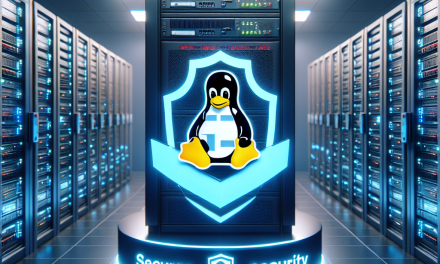In the fast-evolving world of cloud computing and application deployment, containers have emerged as a dominant technology for efficient development, testing, and deployment. At the heart of containerization lies a powerful feature provided by the Linux kernel: namespaces. This article aims to demystify Linux namespaces, exploring their role in container isolation and their significance in modern application architectures.
What are Linux Namespaces?
Linux namespaces are a fundamental feature of the Linux kernel that provide isolation between various system resources. They allow for multiple containers to run independently on a single host machine, each with its own view of the system environment. Namespaces achieve this by creating a “namespace” for resources such as process IDs, network interfaces, user IDs, and filesystems.
The main types of namespaces include:
-
Mount Namespace (
mnt): Isolates file system mount points, enabling each container to have its own view of the filesystem. This means that changes made in one container do not affect the filesystem seen by another. -
Process ID Namespace (
pid): Provides a unique process ID space for each container, meaning that processes can have the same PID in different containers without conflict. This ensures that processes in one container are invisible to those in another. -
Network Namespace (
net): Allocates separate network stacks for each container. Each container can have its own IP addresses, routing tables, and network interfaces, allowing for secure and isolated network communication. -
User Namespace (
user): Facilitates the mapping of user and group IDs between the host and the container. This enhances security by allowing containers to run as non-root users while still having access to required resources. -
IPC Namespace (
ipc): Isolates Inter-Process Communication resources, so that shared memory segments and message queues are unique to each namespace. -
UTS Namespace (
uts): Allows containers to have their own hostname and domain name, enabling personalized networking setups without interference from other containers.
Why Use Namespaces for Isolation?
The isolation provided by Linux namespaces is critical for several reasons:
1. Security
Namespaces enhance security by minimizing the attack surface. Each container operates with its unique set of resources, which helps prevent unauthorized access to processes, files, and networking resources used by other containers or the host system.
2. Resource Management
Namespaces allow for effective resource management by enabling the allocation of system resources such as CPU, memory, and I/O to specific containers. This ensures that no single container can monopolize system resources, leading to performance issues.
3. Scalability
With namespaces, you can run multiple containers on a single host without worrying about conflicts between them. This capability allows developers to scale applications efficiently, deploying multiple instances as needed.
4. Simplified Development
Namespaces facilitate a consistent and reliable environment for developers. Containers provide a streamlined way to package applications with their dependencies, ensuring they work uniformly across different environments.
How Namespaces Work
To illustrate how namespaces function, let’s consider a scenario where you deploy a web server in a containerized environment.
-
Creation: When you create a new container, the container runtime (like Docker or LXC) sets up several namespaces for it, including the mount, PID, and network namespaces.
-
Isolation: Each namespace encapsulates the specific resources, providing a unique environment for the web server. For example, the web server can listen on a port without fearing interference from other containers on the same host.
-
Interaction with Host: While the container operates in a sandboxed environment, it can still communicate with external systems. For instance, using the host’s network namespace, it can send and receive traffic as needed.
-
Termination: Once a container is stopped, the namespaces associated with it become inactive, and all the resources are released, ensuring no lingering side effects on the host system.
Conclusion
As containerization continues to reshape the software development landscape, understanding Linux namespaces provides a crucial foundation for leveraging these technologies effectively. By offering robust isolation mechanisms, namespaces empower developers and sysadmins to create scalable, secure, and efficient application deployments.
Incorporating this knowledge into your toolkit will not only enhance your ability to manage containers but also increase the overall security and performance of your applications. With namespaces, you embark on a journey through the realms of lightweight virtualization, enabling you to unleash the full potential of your applications.
In summary, Linux namespaces are the backbone of container isolation, granting developers the flexibility and security needed in today’s complex application architectures. By comprehending their functionality and advantages, you position yourself at the forefront of modern computing practices, ready to tackle the challenges of deploying scalable, secure applications in a containerized world.





